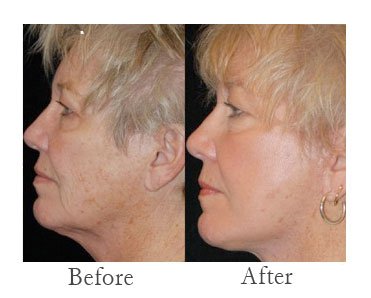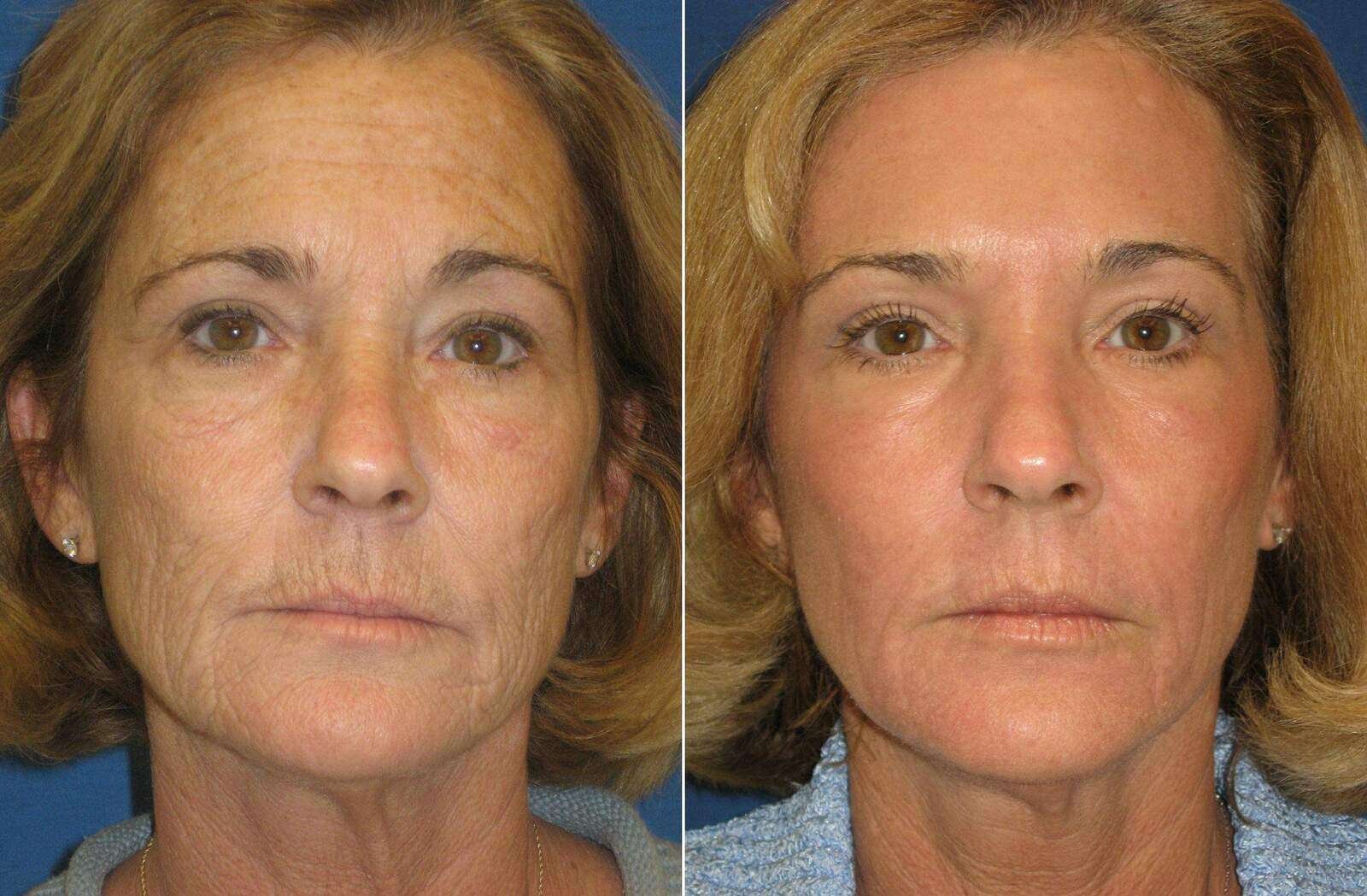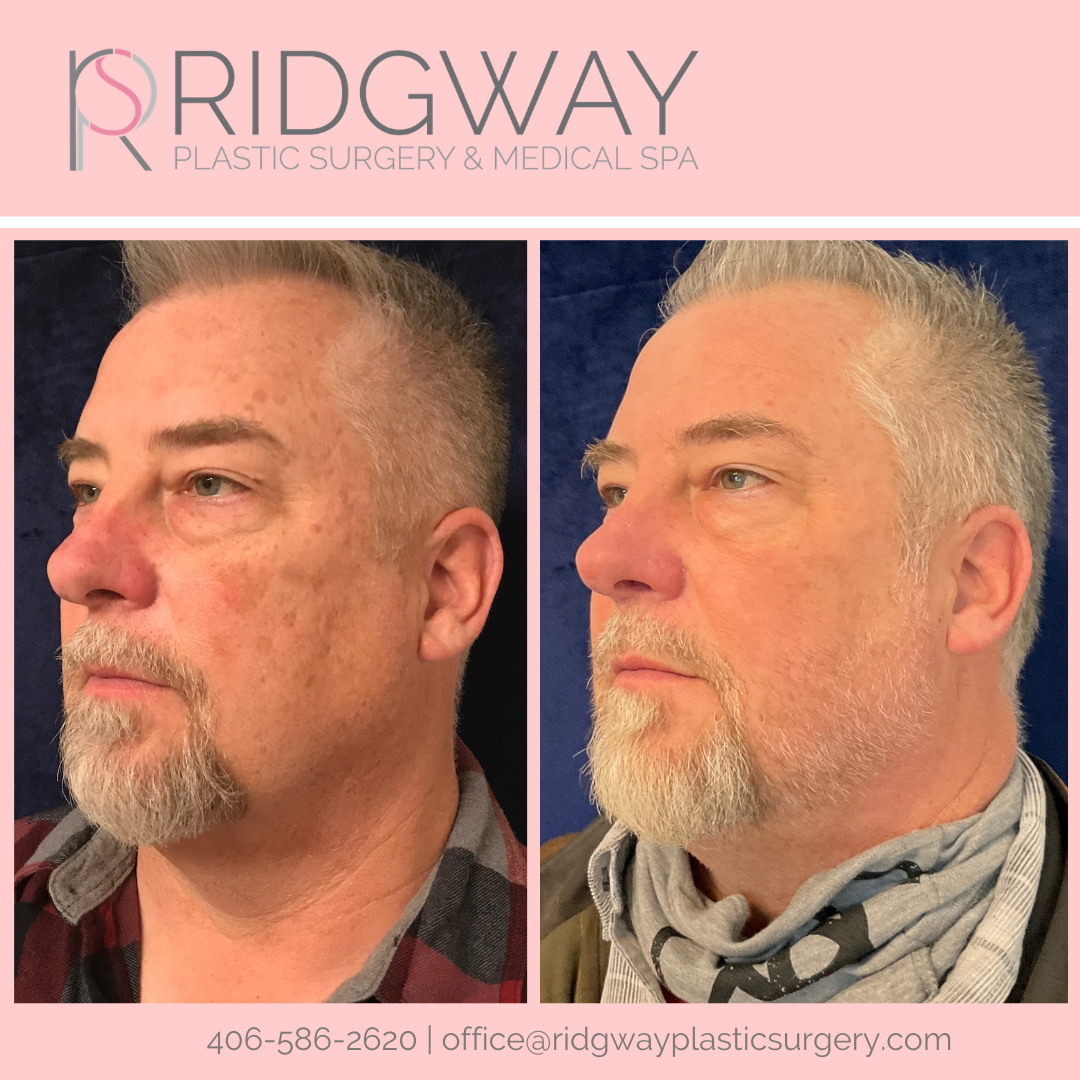Sun, skin disorders, aging and even heredity can all contribute to skin irregularities on the face and elsewhere on the body. These include textural irregularities like wrinkles and acne scars, pigmentation changes like freckles, sunspots or visible blood vessels. In addition, skin may lose tone, feel less firm and lose the healthy glow that is evident in younger skin.
Different treatment modalities are available to treat the different aspects of skin damage.
Laser resurfacing, mechanical resurfacing, chemical peels and injectable products can improve the appearance of fine lines and wrinkles of the entire face or those that develop in specific regions of the face, such as the upper lip and around the eyes. These treatments can also be used to address pigmentation disorders, such as sun and age spots, and they can be used to improve the appearance of acne scars or other skin conditions.
The specific type of treatment that will best address your concerns are determined after a consultation with your board-certified plastic surgeon. Most skin treatments require a series of treatments and a multi-modality approach to achieving excellent results. Most importantly, the patient must be committed to protecting his or her skin going forward so that the results achieved will be longer lasting.
What is a Fractional Co2 Laser Resurfacing?
Laser skin resurfacing, also known as a laser peel, laser vaporization and lasabrasion, can reduce facial wrinkles, scars and blemishes. Newer laser technologies give your plastic surgeon a new level of control in laser surfacing, permitting extreme precision, especially in delicate areas.
What laser skin resurfacing can improve
Fine lines or wrinkles around or under your eyes, forehead or mouth
Scars from acne or chickenpox
Surgical scarring
Non-responsive skin after a facelift
Aged or sun-damaged skin
Liver spots
Improve your complexion if you have yellowish or grayish skin tones
Birthmarks such as linear epidermal nevi
Enlarged oil glands on the nose
How does laser skin resurfacing work?
It's all about using beams of light. Your provider uses the laser to send short, concentrated pulsating beams of light at irregular skin. This creates controlled damage and removes unwanted, damaged skin in a very precise manner one layer at a time.
Laser skin resurfacing's targeted approach means there are fewer problems with hypopigmentation, or a lightening of skin, for procedures such as laser acne scar removal.
The laser beam used in laser resurfacing will remove your outer layer of skin, called the epidermis. It simultaneously heats the underlying skin, called the dermis. This action works to stimulate growth of new collagen fibers. As the treated area heals, the new skin that forms is smoother and firmer. Downtime with this treatment can be more substantial than many other treatments.
QUICK FACTS
PROCEDURE LENGTH
45-60 minutes (depending on extent of procedure)ANESTHESIA
Topical. Local can be injected if desired.IN/OUT PATIENT
OutpatientRECOVERY
1 week of social downtime




